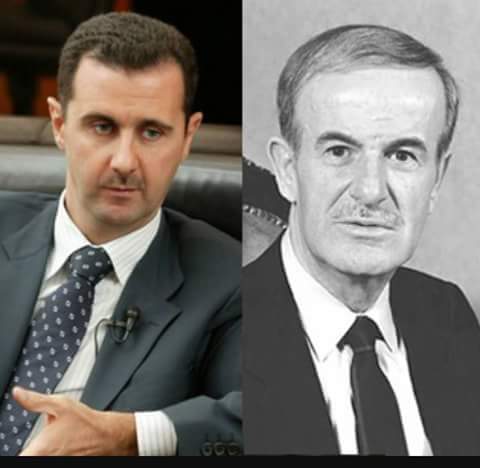قاضي أميركي يحكم بأن الأسد عاون القاعدة على قتل أميركيين
US Judge Rules Assad Helped Al-Qaeda Kill Americans
Ryan Mauro/Clarion Project/May 08/17
A district court judge ruled the Syrian regime — and specifically its ruler, President Bashar al-Assad — are liable for the murders of three Americans by al-Qaeda because of the regime’s massive support for the terrorist group’s branch in Iraq.
In addition to those three Americans, tens of thousands of U.S. soldiers, Iraqis and others have been killed or injured due to Assad’s sponsorship of al-Qaeda and other jihadists.
The lawsuit was filed by the families of Laurence Michael Foley, a U.S. diplomat in Jordan assassinated by al-Qaeda in 2002; Staff Sgt. Keith Matthew Maupin, killed in Iraq in 2004 and Pvt. Kristian Menchacha, who was killed in Iraq in 2006.
The evidence blaming Assad for the death of Foley is particularly strong. Foley was assassinated by al-Qaeda terrorists operating under the leadership of Abu Musab al-Zarqawi, then-leader of al-Qaeda in Iraq. While in his safe haven in Syria, Zarqawi met with the perpetrators to plan the attack and equip them with weaponry and money.
After killing Foley in Jordan, one of the perpetrators escaped back into Syria. Jordan demanded his extradition. Assad refused to comply and told the world that the terrorist was imprisoned. Then, an Arab newspaper discovered that he wasn’t in jail at all. He was running an al-Qaeda training camp in Syria.
As explained in the ruling, the Assad regime’s support was critical to the development of al-Qaeda in Iraq under the leadership of Abu Musab al-Zarqawi. It states, “individuals associated with the Syrian regime played more direct roles in providing resources to, and even helping to create, the Zarqawi Terrorist Organization” (my emphasis).
The assistance was authorized by the highest levels of the regime, including Assad. Zarqawi’s al-Qaeda established an “operational and logistical supply network” in Syria, where the Assad regime actively helped finance, protect and transport Al-Qaeda’s jihadist recruits. Training camps were even permitted to open on Syrian soil.
Zarqawi and his top officials operated inside Syria with “apparent impunity.” The regime’s senior officials had “direct ties” to al-Qaeda. For example, the person who Assad appointed as the leader of the Syrian wing of the Baath Party immediately began sending money and suicide bombers to Zarqawi. When he died, his successor did the same.
Assad didn’t even feel the need to do much to hide his regime’s support of al-Qaeda and killing Americans. An office opened up right across from the U.S. embassy in Damascus to register terrorists and book them a seat on a bus to Baghdad to “wage the jihad against Americans.” When they came to Syrian border guards, they were let through and their passports were stamped with phrases like “volunteer for jihad” or “join the Arab volunteers.”
“Without Syria, there would not have been a developed foreign fighter transit pipeline and an advanced funding network underwriting terrorist operations in Iraq and Jordan,” the ruling states, quoting expert testimony.
Syria has been designated as a State Sponsor of Terrorism by the State Department since 1979. In its latest report on state sponsors published in 2015, the State Department confirms:
“Over the past decade, the Syrian government has played an important role in the growth of terrorist networks in Syria through the Assad regime’s permissive attitude towards al-Qaeda and other terrorist groups’ foreign fighter facilitation efforts during the Iraq conflict. Syria has served for years as a hub for foreign terrorist fighters; the Syrian government’s awareness and encouragement for many years of violent extremists’ transit through Syria to enter Iraq, for the purpose of fighting Coalition troops, is well-documented.”
One indicator of how much responsibility rested with Assad comes in the form of the “Sinjar records;” a stockpile of terrorist documents captured by U.S. forces in October 2007. The U.S. discovered that the Islamist terrorists in Iraq were much more dependent upon Assad than previously understood.
Approximately 90 percent of the foreign jihadists who arrived in Iraq between 2006 and 2007 crossed over from the Syrian border. And these jihadists were responsible for 90 percent of the suicide bombings.
The case only reviewed the relationship between the Assad regime and al-Qaeda in Iraq from 2002 to 2006 because that’s when the three Americans were killed. It undoubtedly continued after that. The ideological differences, back-and-forth condemnations and even clashes did not sever the relationship.
For example, in 2008, the Treasury Department sanctioned an anti-American TV station based in Syria. The Treasury Department pointed out that the station was “publicly critical” of al-Qaeda in Iraq, even as it was secretly working with the group. Assad also used al-Qaeda affiliates to terrorize Lebanon.
In 2009, the Iraqi government confronted Assad over his support of al-Qaeda and other terrorists wreaking havoc in Iraq. The interference was of such a magnitude that the Iraqi government began publicly releasing evidence, including confessions of terrorists, to show how deeply involved Assad was. The Iraqis called out Assad for harboring Iraqi Baathists who then joined al-Qaeda’s network.
The Iraqis even tried to have a U.N. tribunal established to indict Syrian officials. When the Iraqis began trying to rally U.S. support for a tribunal, terrorism in Iraq fell by three-fourths, showing just how instrumental the Assad regime was in sustaining the violence.
The Obama Administration took a neutral stance, and the effort failed as President Obama was insistent on reaching out to Iran and Syria. In fact, the Iraqis withdrew their ambassador to Syria as the U.S. was sending one over.
While Assad and Iran were playing an instrumental role in creating the mayhem in Iraq that killed about 4,500 U.S. troops and wounded about 32,000, they used that very same mayhem to argue that the U.S. needed its cooperation for the sake of stability.
In 2009, a political adviser to the Syrian ambassador essentially admitted that Assad saw the killing and wounding of U.S. troops as a means of making America kiss his feet.
“A previous administration did not want to cooperate, even if it cost American lives. This administration is realizing you have to cooperate in order to save lives, in order to advance U.S. interests, and that’s what we’re looking forward into the future,” said an aide to the Syrian ambassador.
Assad and his Iranian puppeteers continued to use al-Qaeda and other Sunni jihadists, even in recent years. The clearest proof that Iran views al-Qaeda’s presence in Syria as beneficial to Assad is the fact that Iran still supports al-Qaeda’s operations, specifically including the group’s activities in Syria.
There are few people on earth who have done more to kill and maim American soldiers than Assad and his regime. Don’t let his regime sanitize its image by pointing to the jihadists he previously strengthened and used to shed limitless blood and tears of American military and diplomatic personnel and their families.
*Ryan Mauro is ClarionProject.org’s Shillman Fellow and national security analyst and an adjunct professor of counter-terrorism. He is frequently interviewed on top-tier television and radio. To invite Ryan to speak, please contact us.





















